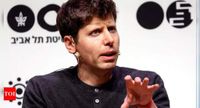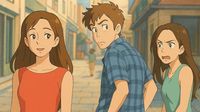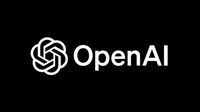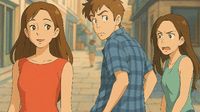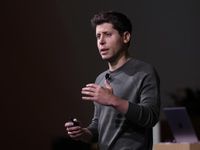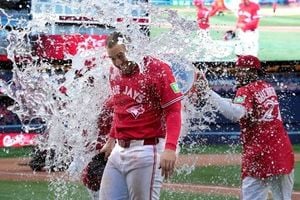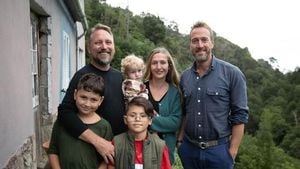OpenAI has recently launched an advanced image generator within its GPT-4o model, triggering a wave of creativity among users who are transforming their photos and beloved movie scenes into the enchanting style of Studio Ghibli. This new feature, dubbed "Images in ChatGPT," allows users to upload images and have them reimagined in the iconic anime aesthetic that Studio Ghibli is famous for.
On March 26, 2025, OpenAI upgraded its GPT-4o model, marking a significant leap in artificial intelligence capabilities. The upgrade includes a natively multimodal model that can generate images, text, audio, and video, providing users with a comprehensive creative tool. Unlike previous models, this one can handle complex prompts and generate photorealistic outputs, making it a powerful competitor in the field of AI image generation alongside platforms like Midjourney and Stable Diffusion.
The reception of the new image generator has been overwhelmingly positive. Users have taken to social media platforms, particularly X (formerly Twitter), to showcase their creations. Many have shared their excitement about being able to transform everyday photos into Ghibli-style masterpieces. One user humorously tweeted, "We have reached AGI: Artificial Ghibli Intelligence," alongside their transformed image.
Others have expressed their delight at the ability to create Ghibli-esque portraits of their families, pets, and even iconic movie scenes. One user noted, "Ok I think I’m in love with ChatGPT’s new image editing feature. Can turn all my family photos into Ghibli portraits." The trend has quickly gained traction, with countless examples flooding timelines, showcasing everything from Bollywood movie scenes to classic Western films reimagined in the Ghibli style.
Sam Altman, CEO of OpenAI, has joined in on the fun, responding to the viral trend by sharing his own Ghibli-style image on X. He reflected on the unexpected popularity of the feature, saying, "> be me / > grind for a decade trying to help make superintelligence to cure cancer or whatever / > mostly no one cares for first 7.5 years, then for 2.5 years everyone hates you for everything / > wake up one day to hundreds of messages: ‘look I made you into a twink ghibli style haha.'" His playful engagement has further fueled interest in the new feature.
However, the rollout of this new technology has not been without its controversies. On the same day, Altman acknowledged a bug within the image generator that prevents it from creating images of "sexy women" while allowing for "sexy men." A user highlighted this inconsistency, prompting Altman's response: "That's a bug, should be allowed, will fix." He later added, "hot guy though!" This revelation has sparked discussions about gender bias in AI and the challenges of content moderation in generative models.
Studio Ghibli, founded in 1985 by renowned filmmaker Hayao Miyazaki, is celebrated for its unique storytelling and stunning animation. The studio's films, such as "Spirited Away" and "My Neighbor Totoro," have garnered a massive global following, known for their rich narratives and beautiful art. However, Miyazaki has previously expressed strong disapproval of AI-generated animation, stating in 2016, "I am utterly disgusted. If you really want to make creepy stuff you can go ahead and do it. I would never wish to incorporate this technology into my work at all." His comments highlight the ongoing tension between traditional artistry and the rise of AI in creative fields.
Despite the mixed opinions from Ghibli creators, the ability to generate Ghibli-style images has captivated fans and sparked a new wave of creativity. Users have been sharing their personalized prompts, asking OpenAI to envision scenes from popular movies like "The Lord of the Rings" and "The Godfather" in the Ghibli aesthetic. One user posted a reimagined scene from "Scarface," stating, "A less frightening Al Pacino in Scarface?" while another shared a reworked moment from "Dilwale Dulhaniya Le Jayenge," showcasing the versatility of the new feature.
OpenAI's image generator is not only accessible to Plus, Pro, Team, and Free users, but it also includes API support, allowing developers to integrate this technology into their applications. The model's ability to depict 10-20 objects in a scene and support in-context learning with reference images is a significant enhancement over previous iterations. OpenAI has also implemented strict content policies to prevent the generation of explicit or deepfake content, ensuring a responsible approach to the technology.
The launch of the advanced image generator has opened up new possibilities for creative expression, allowing users to blend their personal memories with the enchanting style of Studio Ghibli. As the trend continues to grow, it raises questions about the future of AI in the arts and the balance between innovation and artistic integrity. The excitement surrounding OpenAI's latest offering is palpable, and it seems that the intersection of AI and creativity is just beginning to unfold.
As users continue to explore the capabilities of the GPT-4o image generator, the world watches closely, eager to see how this technology will evolve and shape the creative landscape. With the potential to democratize art and inspire new forms of storytelling, OpenAI's innovations may very well redefine the boundaries of artistic expression in the digital age.
